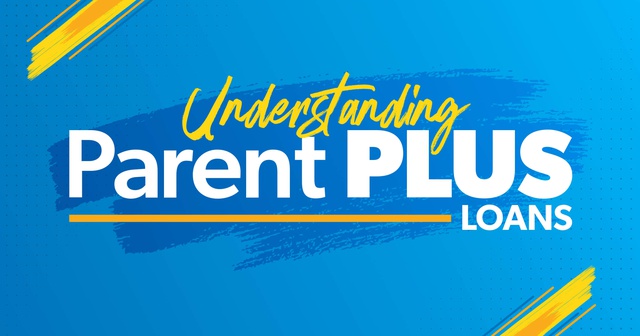Navigating the world of student loans can be daunting, especially for parents who are trying to support their child’s education. One option available to parents is a Parent Plus Loan, which can help cover the cost of higher education expenses not covered by other financial aid options. In this guide, we will provide an overview of Parent Plus Loans and offer tips on how to effectively manage them.
Toc
Introduction to Parent Plus Loan

Sending your child to college is an exciting milestone, but the rising cost of tuition can bring financial strain. One option parents can consider is the Parent PLUS Loan, a federal loan designed to help parents finance their child’s education. This guide covers everything you need to know about Parent PLUS Loans, from eligibility and application processes to managing debt and understanding its implications.
What Are Parent PLUS Loans?
Parent PLUS Loans are federal loans that parents of dependent undergraduate students can use to help pay for college expenses not covered by other financial aid. These loans are issued by the U.S. Department of Education and offer several benefits, including fixed interest rates and flexible repayment options.
Eligibility Requirements
To be eligible for a Parent PLUS Loan, you must meet the following requirements:
- Be the biological or adoptive parent of a dependent undergraduate student enrolled at least half-time in an eligible institution.
- Have a good credit history. If you have an adverse credit history, you may still be able to receive a loan by obtaining an endorser who does not have an adverse credit history or appealing the decision.
- Meet other general eligibility requirements for federal student aid, such as being a U.S. citizen or eligible noncitizen.
How much can parents borrow with a Parent Plus Loan?
The maximum amount parents can borrow with a Parent PLUS Loan is the difference between the cost of attendance at their child’s school and any other financial aid the student receives. This includes grants, scholarships, and federal student loans. There is no set maximum loan limit, but keep in mind that you should only borrow what you need to cover necessary education expenses.
How to Apply for a Parent PLUS Loan

To apply for a Parent PLUS Loan, you will need to complete the following steps:
Complete the FAFSA
The first step in applying for a Parent PLUS Loan is for your child to complete the Free Application for Federal Student Aid (FAFSA). This form helps determine your child’s eligibility for federal financial aid, including grants, work-study, and federal student loans. Ensure that your child’s FAFSA is submitted before you apply for a Parent PLUS Loan.
Submit a Parent PLUS Loan Application
Once the FAFSA has been completed, you can apply for a Parent PLUS Loan through the U.S. Department of Education’s Direct PLUS Loan application portal. This involves:
- Logging in with your Federal Student Aid (FSA) ID.
- Providing the necessary information about yourself and your child, including the school your child will be attending.
- Authorizing a credit check. The Department of Education will review your credit history to determine your eligibility.
Sign the Master Promissory Note (MPN)
If your application is approved, you must sign a Master Promissory Note (MPN). The MPN is a legal document in which you promise to repay your loan(s) and any accrued interest to the U.S. Department of Education. It also explains the terms and conditions of your loan(s). You can complete the MPN online using your FSA ID.
Receive Loan Disbursement
Once you’ve signed the MPN, the loan funds will be disbursed directly to your child’s school to cover education-related expenses such as tuition, fees, room, and board. Any remaining funds will be given to you or your child to use for other education expenses. It is crucial to monitor these funds carefully and ensure they are used effectively to support your child’s education.
Undergo a Credit Check
As mentioned earlier, Parent PLUS Loans require a credit check. If you have an adverse credit history but still want to take out a loan, you can either obtain an endorser (someone who agrees to repay the loan if you fail to do so) or appeal the decision by providing documentation of extenuating circumstances.
Repayment Options

Parent PLUS Loans offer several repayment options to fit your financial situation. You can choose between standard, extended, or graduated plans and even opt for an income-driven plan if you are struggling to make payments. It is important to carefully consider these options and choose the one that works best for you.
Standard Repayment Plan
The Standard Repayment Plan provides a fixed monthly payment over a period of up to 10 years. This plan typically results in the least amount of interest being paid over the life of the loan because the repayment period is shorter compared to other plans. However, the monthly payments may be higher, which could be a consideration if your budget is tight.
Extended Repayment Plan
The Extended Repayment Plan allows you to reduce your monthly payments by extending the repayment period to up to 25 years. This can make it easier to manage your budget in the short term, but it is important to note that you will pay more in interest over the life of the loan compared to the Standard Repayment Plan.
Bài viết liên quan:
Graduated Repayment Plan
The Graduated Repayment Plan starts with lower monthly payments that gradually increase every two years. This plan is beneficial if you expect your income to grow steadily over time. Like the Extended Repayment Plan, the total amount of interest paid will be higher compared to the Standard Repayment Plan due to the longer repayment period.
Income-Driven Repayment Plans
For parents who experience financial difficulties, Income-Driven Repayment (IDR) Plans can be an option. These plans base your monthly payment on your income, family size, and state of residence. The payment amounts can vary, and the repayment periods can extend up to 25 years. If any loan balance remains after meeting the repayment terms, it may be forgiven, although you might have to pay taxes on the forgiven amount.
Managing Your Parent PLUS Loan
Proper management of your Parent PLUS Loan is crucial to minimize financial stress and successfully repay the debt. Here are a few tips:
- Keep Track of Payments: Set up automatic payments to ensure you never miss a due date and avoid late fees. Many service providers offer interest rate discounts for enrolling in automatic payments.
- Communicate: Stay in touch with your loan servicer and promptly inform them of any changes to your financial situation, as well as any issues that may affect your ability to make payments.
- Budget Wisely: Establish a realistic budget that includes your monthly loan payments. This will help you manage your finances more effectively and avoid borrowing more than necessary.
- Consider Refinancing: Look into refinancing options that might offer lower interest rates or better repayment terms.
Interest Rates and Fees

Interest rates and fees for Parent PLUS Loans are important factors to consider when planning for college expenses. Interest rates for these loans are determined by the federal government and are fixed for the life of the loan. Each year on July 1, a new interest rate is set for loans first disbursed between that date and the following June 30. It’s crucial to stay informed about the current rates to calculate your potential costs accurately.
Current Interest Rates
As of the most recent update, Parent PLUS Loan interest rates are set at a fixed rate. These rates can be found on the Federal Student Aid website and vary each academic year. Understanding the interest rate for your loan is vital for budgeting and financial planning.
Loan Fees
In addition to interest, Parent PLUS Loans come with a loan fee that is a percentage of the total loan amount. This fee is deducted from each loan disbursement, reducing the amount of money available to cover educational expenses. The current loan fee percentage is also updated annually on the Federal Student Aid website. Always check for the latest figures to understand the full cost of borrowing.
Calculating Total Loan Costs
To calculate the total cost of your Parent PLUS Loan, consider both the fixed interest rate and the loan fee. Create a repayment plan that factors in these costs and assesses how they will impact your long-term financial planning. Utilize online loan calculators offered by the U.S. Department of Education or financial institutions to estimate your monthly payments and total repayment cost.
Comparing Parent PLUS Loans to Other Loan Options

When planning for college expenses, it’s wise to compare Parent PLUS Loans with other loan options available to you and your child. Each type of loan has its own set of terms, interest rates, and eligibility requirements that can significantly affect your long-term financial health.
Federal Direct Student Loans
Federal Direct Student Loans, often referred to as Stafford Loans, are a type of federal loan available directly to students. These loans offer fixed interest rates that are generally lower than those for Parent PLUS Loans and have various repayment options, some of which are also income-driven. Additionally, Federal Direct Loans do not require a credit check, making them accessible to a broader range of students. Subsidized loans, which are available based on financial need, offer the added benefit of the government covering the interest while the student is in school at least half-time and during deferment periods.
Private Student Loans
Private student loans are offered by banks, credit unions, and other private lenders. These loans can have either fixed or variable interest rates, which might be lower or higher than those of federal loans, depending on the borrower’s creditworthiness. Private loans often require a credit check and may require a co-signer, typically a parent or guardian, to secure better interest rates. Before opting for a private loan, thoroughly research and compare the terms, fees, and conditions from various lenders to ensure you’re getting the best possible deal.
Home Equity Loans or Lines of Credit (HELOC)
Home equity loans or lines of credit allow homeowners to borrow against the equity in their homes. These options can come with lower interest rates compared to other types of loans because they are secured by your property. However, bear in mind that defaulting on these loans could put your home at risk. This option may be suitable if you require flexible repayment terms and have significant home equity.
529 Savings Plans
529 savings plans are tax-advantaged accounts designed specifically for education expenses. Unlike loans, a 529 plan involves saving money over time, accumulating interest-free or tax-free earnings depending on how the funds are used. Taking the time to invest in a 529 plan early can substantially reduce the need for borrowing later on. Withdrawals from these accounts are tax-free as long as they are used for qualified educational expenses, which adds to their appeal.
Comparing Total Costs and Benefits
The key to making an informed decision about financing college is to compare the total costs and benefits of each loan option comprehensively. Consider using online calculators to estimate monthly payments, total repayment amounts, and the long-term financial implications for each type of loan. Evaluate the flexibility of repayment plans, potential tax benefits, and the terms related to interest rates and loan forgiveness. Having a clear understanding of these factors will enable you to choose the most appropriate and cost-effective method for supporting your child’s educational journey.
Conclusion
In conclusion, financing a college education can be a complex decision that involves evaluating various loan options and considering both short-term and long-term financial implications. Whether you opt for Parent PLUS Loans, federal student loans, private loans, home equity options, or 529 savings plans, it’s crucial to conduct thorough research and planning. This ensures that you choose the most suitable option for your financial situation and helps support your child’s educational aspirations effectively. Consulting with financial advisors and using the tools available can provide additional guidance and help you make informed decisions about the best way to fund a college education.






